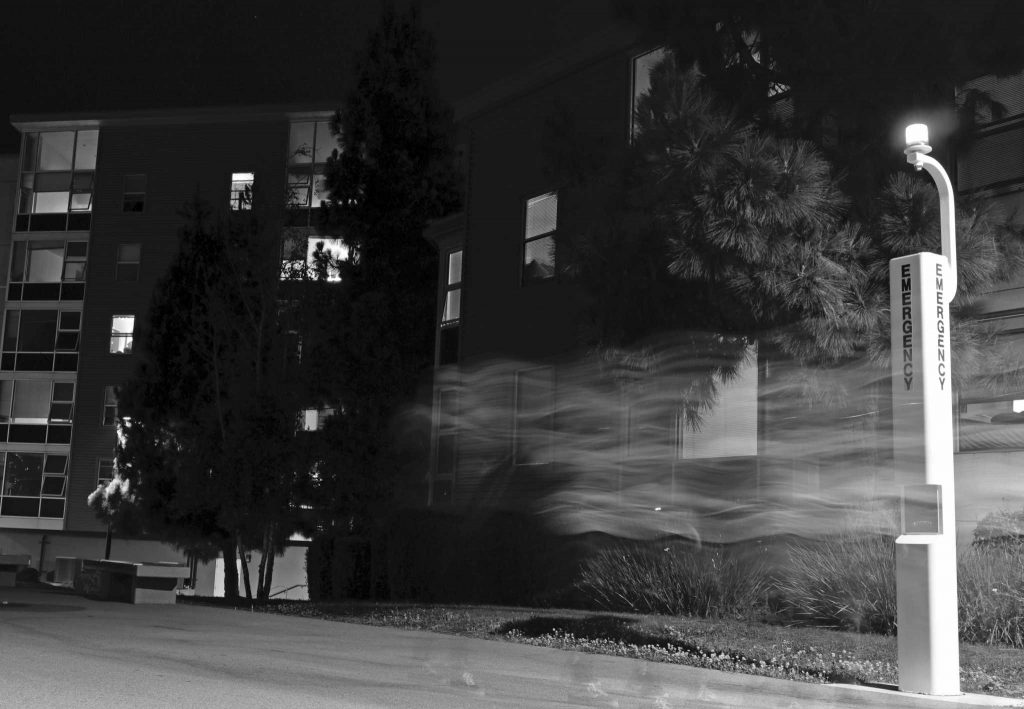SF State’s on-campus crime rate has increased by 43 percent, according to the latest Annual Security and Fire Safety Report released Aug.11.
The report, which includes data from 2013 to 2015, shows a general decrease in crime apart from the three exceptions responsible for the surge: a sharp increase in reported stalking and domestic violence, and a steady increase of reported rape in the dorms; the latter of which has seen an increase of 50 percent per annum, starting with four reports in 2013 and rising to nine in 2015.
The proliferation of reported on-campus sexual assault has been an issue concerning colleges for decades, and an increase of reported sexual assaults, although concerning, may demonstrate an important change in how the violent crime is approached.
“It’s not so much a matter of increase of crime per se, it has to do more with the reporting process,” said San Francisco State University Police Chief Jason Wu. “It relates to the implementation of reporting through Title IX.”
According to Wu, it can often be intimidating for victims, who have already suffered considerable trauma, to go through the reporting process with the police. The Title IX procedures, however, are less demanding.
Police may need to collect evidence, such as clothing, or take the victim to SF General Hospital for a sexual assault examination. Alternatively, the Title IX reporting process may start with a conversation and information on support services such as the SAFE Place, a sexual assault, domestic violence and stalking resource center located in the Student Services building.
“We attribute our increasing reporting rates to the significant efforts we have invested for the past three years in providing education, outreach and training to the campus community,” said Vice President of Student Affairs and Title IX Coordinator Luoluo Hong in an email.
Although SF State has seen an uptick in reported sexual assault, the crime remains severely underreported. According to the Rape, Abuse and Incest National Network (RAINN), nearly one in four female undergraduate students suffer a sexual assault during their college career.
SF State, which according to its 2015 data book hosted 14,575 undergraduate female students in Fall 2014, received only six reports that year.
First among the reasons cited for remaining silent was the belief that it was a personal matter, according to RAINN, followed closely by a fear of reprisal.
Victims of on-campus rape often live in close proximity to their attacker, sometimes seeing them on campus, or even in class—forcing them to relive trauma on a regular basis.
“Most rapes are perpetrated by someone the victim knows, either personally or by association. Those occur with greater frequency than, for example, stranger rape,” said Wu. “As such, that’s why there is a greater propensity of these incidents happening in dormitory situations than, say, out in the public.”
In the three years documented in 2016’s annual report, each sexual assault—apart from one—came from SF State’s residence community.
Philippe Cumia, director of SF State’s student housing program, declined to comment.
Student housing does have security measures in place, such as a check-in process with an RA, but after students are in their room the school can do little without invading their privacy, Wu said.
Each report warrants a thorough investigation, but witnesses are rare and the process is slow.
“Resolutions through the criminal justice system or even the civil courts can take many years; students often graduate before they see an outcome,” said Hong. “A university administrative process allows for more timely resolution in comparison.”
In addition to a faster investigation— nine-and-half months from report to final appeal at most, according to Hong— students can seek legal intervention as well.
“We would offer an emergency protective order, which we can get on the victim’s behalf,” Wu said. “During this time the victim can then file a temporary restraining order through the courts.”
Incoming freshmen cinema students Amber Granite and Kiana Ancheta both feel safe in the dorm they will reside in this coming year.
“I feel I’ll be more aware in the dorm itself, but I feel I came pretty prepared from the outside,” Granite said. “We have pepper spray and stuff.”
New students must take an online orientation that covers subjects many college students encounter, including depression, drug abuse and sexual assault.
SF State has also created a new unit called Health Promotion & Wellness to bolster support for victims of sexual violence.
“Health Promotion & Wellness was a new unit created nearly two years ago to increase the quantity and quality of sexual violence prevention education— among many kinds of health-related programming— including for our residential student community,” Hong said.
According to Wu, UPD made two arrests for rape in relation to the 2015 incidents.
“It should be noted that the ultimate goal of (the) UPD and the University is NOT the culmination of arrests,” Wu said. “Rather, the ultimate goal is to ensure victims are made ‘whole’ in whatever means most comfortable for them…some victims may wish to forgo reliving the trauma during the investigative process and again during court proceedings.”





